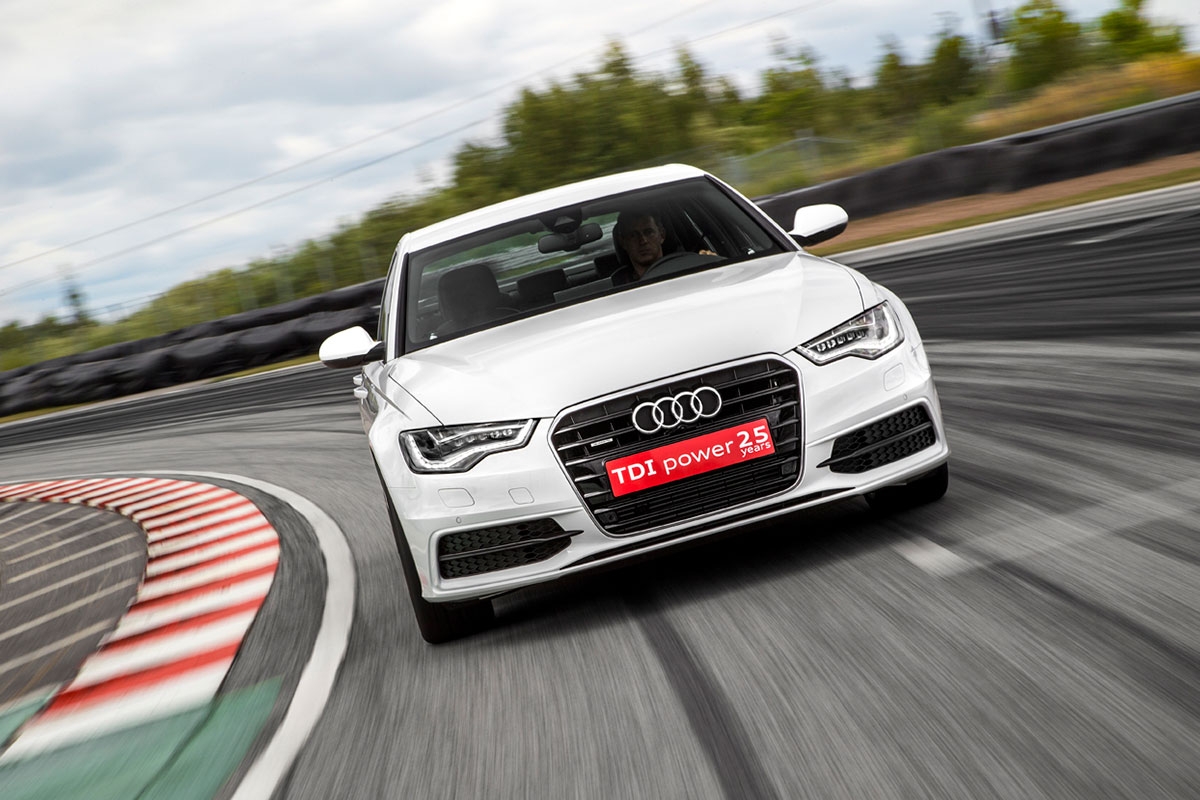Audi creates an even more sporty diesel engine thanks to the development of the electric biturbo, a technology that adds an additional electric compressor to the turbocharger moved by the exhaust gases.
TDI engines obtain their force of supercharging pressure generated by the TurcomPressor, a pressure that depends on the energy of the exhaust gases. Thanks to the electric biturbo, it no longer depends on the energy of the exhaust gases. Its additional electrical compressor, arranged in series, allows to establish the supercharging pressure and reach a high motor torque even in low regimes.
Biturbo operation in detail
Instead of the turbine wheel, this new diesel engine includes a small electric motor that accelerates the compressor wheel with a maximum power of 7 kW to the maximum rotation regime in a time of just 250 ms.
The electrical compressor is behind the supercharging air radiator. To very low regimes, and therefore with an energy of the low exhaust gases in the main turbocharger, the bypass valve closes, so that the air is diverted to the electrical compressor. This can be integrated in a flexible and compact way in different overcharge concepts.
Characteristics of the new 3.0 V6 engine integrated into the Audi A6 TDI Concept
3.0 V6 contributes to the Audi A6 TDI concept a maximum power of 326 hp (240 kW) and a maximum torque of 650 nm, available between 1,500 and 3,500 rpm.
The additional electrical compressor completes the development of the torque curve below the aforementioned margin, and guarantees a quick and elastic response. Thus, the Audi A6 TDI Concept manages to ascend 60 to 120 km/h in just 8.3 seconds, circulating in sixth march.
One of the most positive points of this new Diesel biturbo engine is that the supercharging pressure is immediately available after each gear change, thanks to the combined action of the two turbocompressors.
However, what most impresses with the two technical prototypes is the rapid power deployment, almost immediate, even with low regimes. Save many changes to a minor march and maintain under the level of revolutions. The most sporty drivers will know how to especially appreciate the impetus by advancing and the spontaneous deployment of power by accelerating at the exit of the curves.
Application of the new biturbo engine
Electric biturbo is suitable for use in many Audi models series, both for diesel and gasoline engines. Its application to TDI engines will soon be released to serial production.
The energy that the electrical compressor needs for acting is achieved largely without consuming fuel thanks to recovery in the deceleration phases.
The electricity supply obtains it from an independent electricity network of 48 V with its own lithium -ion battery located in the trunk, and an electronic power module. A CC/CC transformer establishes the connection with the 12 V on board network.
The new secondary network of 48 V brings great advantages. It is able to supply more energy than the 12 V network to thermoelectric heaters, electromechanical rear brakes or auxiliary motor groups such as oil and water pumps. The greatest tension implies lower currents; With this, smaller cable sections can be made, which reduces the weight.
Other models with biturbo engine: the Audi RS 5 Tdi Concept
Biturbo V6 is also used in the Audi RS 5 TDI Concept. The biturbo engine yields in this Audi 385 hp model (283 kW), and its maximum motor torque amounts to 750 nm between 1,250 and 2,000 rpm. When starting the march, the electrical compressor complements the supercharging system with double turbocharger, and provides an immense pair. If the driver continues to step on the accelerator, it reaches 100 km/h in about 4 seconds.























































